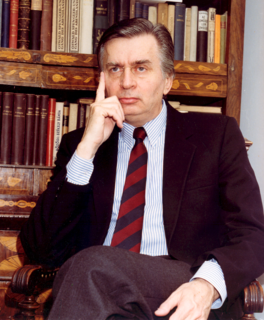
The Hungarian Workers' Party is a communist party in Hungary led by Gyula Thürmer. Established after the fall of the communist Hungarian People's Republic, the party has yet to win a seat in the Hungarian parliament. Until May 2009 it was a member of the Party of the European Left.
Elections in Hungary are held at two levels: general elections to elect the members of the National Assembly and local elections to elect local authorities. European Parliament elections are also held every 5 years.
The National Democratic Party was a political party in Hungary.

The Magyar Party was a political party in post-World War I Romania.

The 1990 Hungarian parliamentary elections were held in Hungary on 25 March 1990, with a second round of voting taking place in all but five single member constituencies on 8 April. They were the first completely free and competitive elections to be held in the country since 1945, and only the second free elections in the country's history. The conservative, nationalist Hungarian Democratic Forum (MDF) beat the liberal and more internationalist Alliance of Free Democrats, which had spearheaded opposition to Communist rule in 1989, to become the largest party in parliament. The Hungarian Socialist Party, the former Communist party, suffered a crushing defeat, winning only 33 seats for fourth place.
The Autonomous Agrarian Union was a political party in Czechoslovakia, which fought for autonomy for Subcarpathian Rus' within the Second Czechoslovak Republic. The party was founded as the Subcarpathian Agrarian Union. The party published Russkij vestnik. It was represented in the Czechoslovak parliament by Ivan Kurtyak(ru).
The Hungarian-German Social Democratic Party was a social democratic political party in Slovakia. It was founded in 1919 by social democrats from ethnic minority communities. The party had a German and a Hungarian section. The German and Hungarian social democrats in Slovakia had developed an antagonistic relationship with the Slovak social democrats, who had merged into the Czechoslovak Social Democratic Workers Party as Austria-Hungary was broken up after the First World War. Issues of contention between Hungarian/German and Slovak social democrats included views of the February Strike of 1919 and the Hungarian Soviet Republic.

Parliamentary elections were held in Hungary on 25 and 26 January 1920. However, they were only held in 164 districts. After the Treaty of Trianon was signed, the 44 districts previously occupied by Romania voted between 13 June and 5 July, whilst the 11 districts occupied by Serbia did not vote until 30 and 31 October 1921. The election was held with compulsory voting. In protest at this and other changes to the franchise that left 60% of the voting age population unable to vote, the Hungarian Social Democratic Party boycotted the elections, and called for its supporters to cast invalid votes, resulting in an unusually high number of blank or invalid votes - 11.8% in the January elections and over 20% in Budapest and other major cities.

Parliamentary elections were held in Hungary on 8 June 1985. The Hungarian Socialist Workers' Party was the only party to contest the elections, and won 288 of the 387 seats, with 98 of the remaining 99 going to independents selected by the party, whilst one seat remained unfilled until the following year.

The Schleswig Party is a regional political party in Denmark representing the North Schleswig Germans.
The Christian Socialist Party was a political party in Hungary during the early 1920s.
The Christian Social and Economic Party was a political party in Hungary during the early 1920s.
The Christian National Party was a short-lived political party in Hungary during the early 1920s.
The Christian National Agricultural Workers' and Civic Party, more commonly known as the Andrássy-Friedrich Party after the leaders, Gyula Andrássy the Younger and István Friedrich, was a political party in Hungary during the early 1920s.
The Party of Independence and '48, also known mostly by its shortened form Independence Party, was one of the two major political parties in the Kingdom of Hungary within Austria-Hungary, along with the Liberal Party then National Party of Work. During its existence, the F48P strongly opposed the Austro-Hungarian Compromise of 1867. The party was revived after the fall of the Hungarian Soviet Republic and restoration of the monarchy.
The Christian Agricultural Workers and Craftsmen Party was a political party in Hungary during the early 1920s.
The Liberal Opposition was a political party in Hungary during the early 1920s.
The Hungarian Agricultural Labourers and Workers Party was a political party in Hungary during the inter-war period.

The Hungarian National Socialist Agricultural Labourers' and Workers' Party was a far-right political party in Hungary during the late 1930s.
The National Workers' Party was a political party in Poland.









